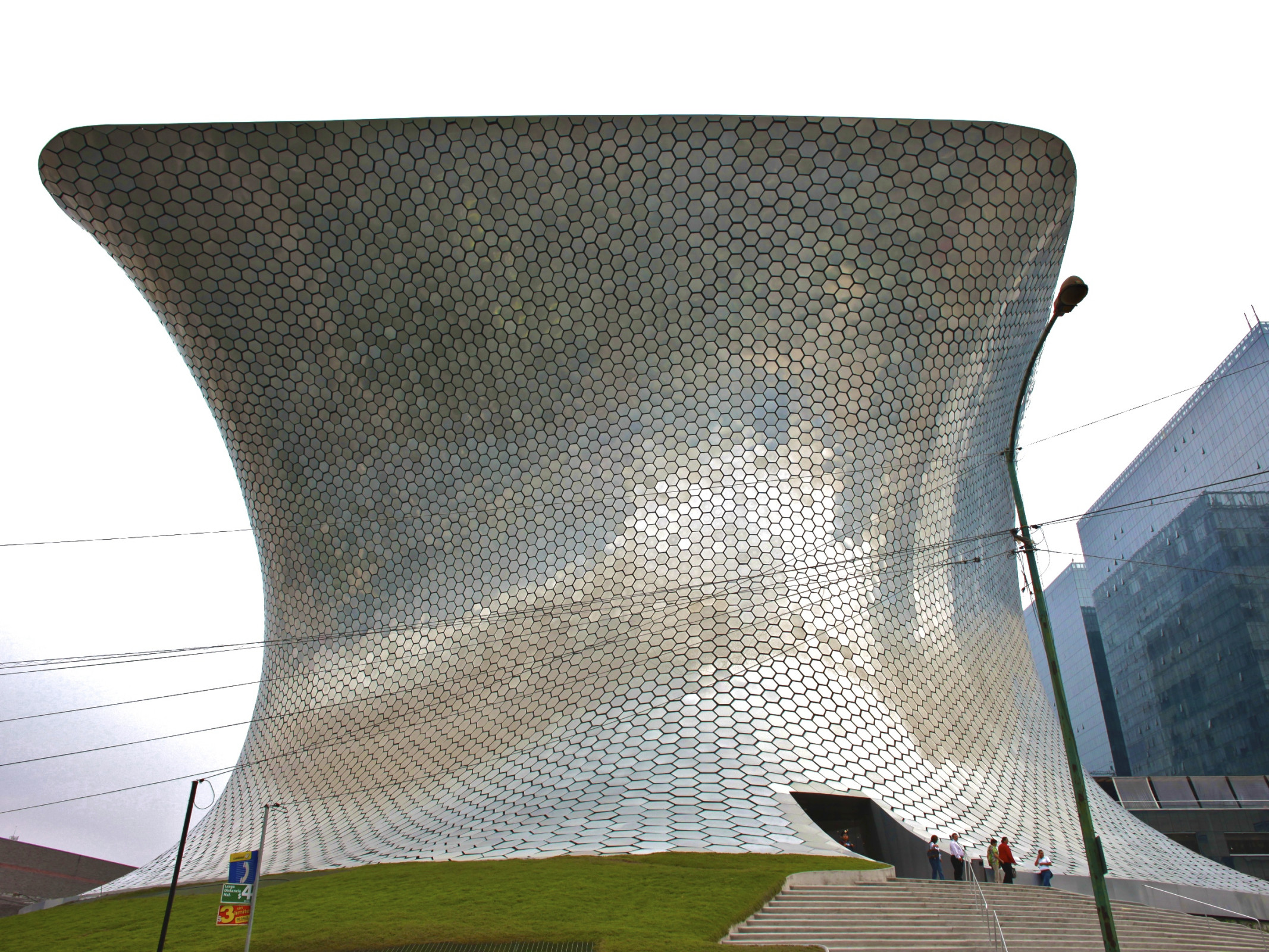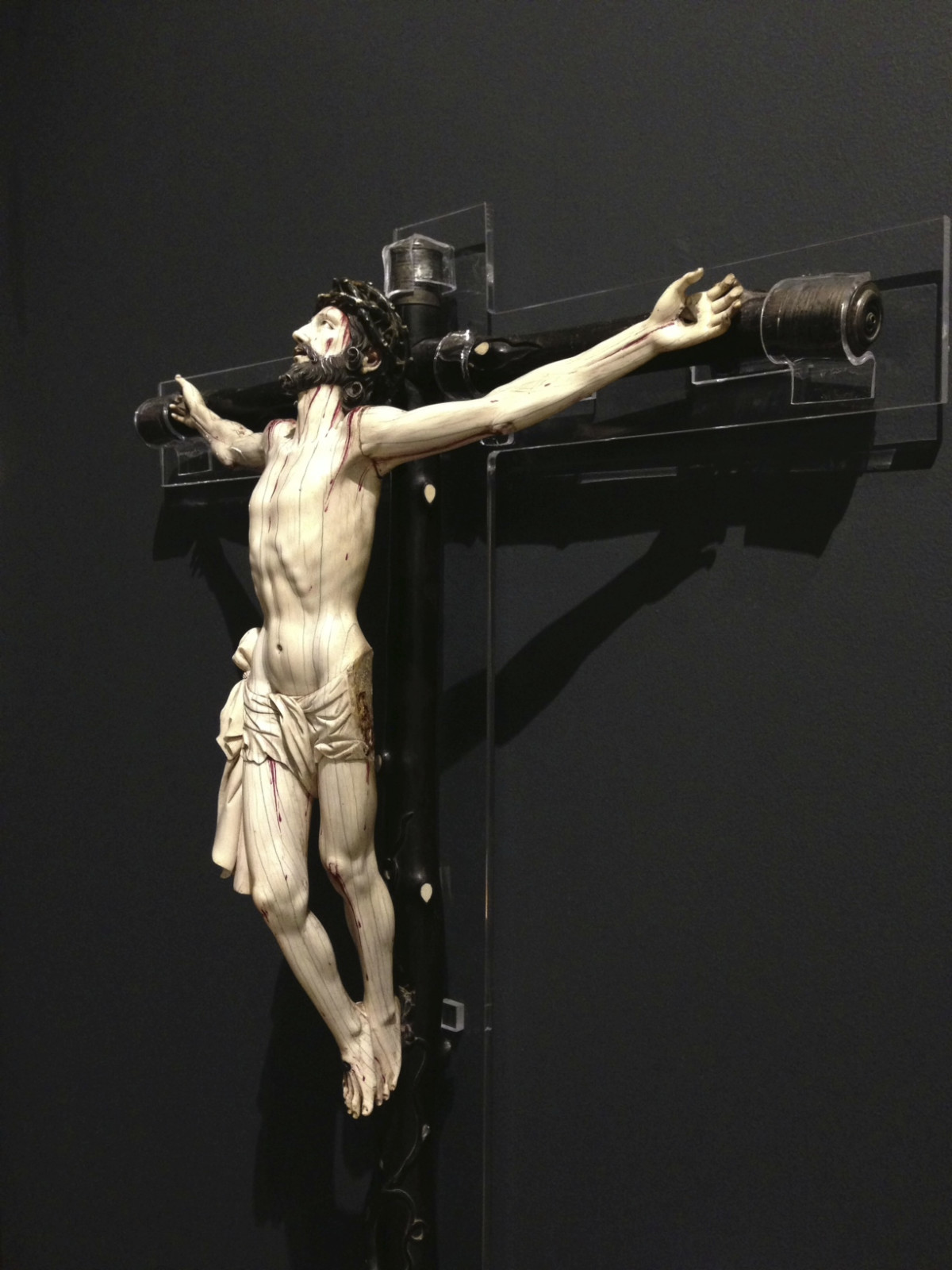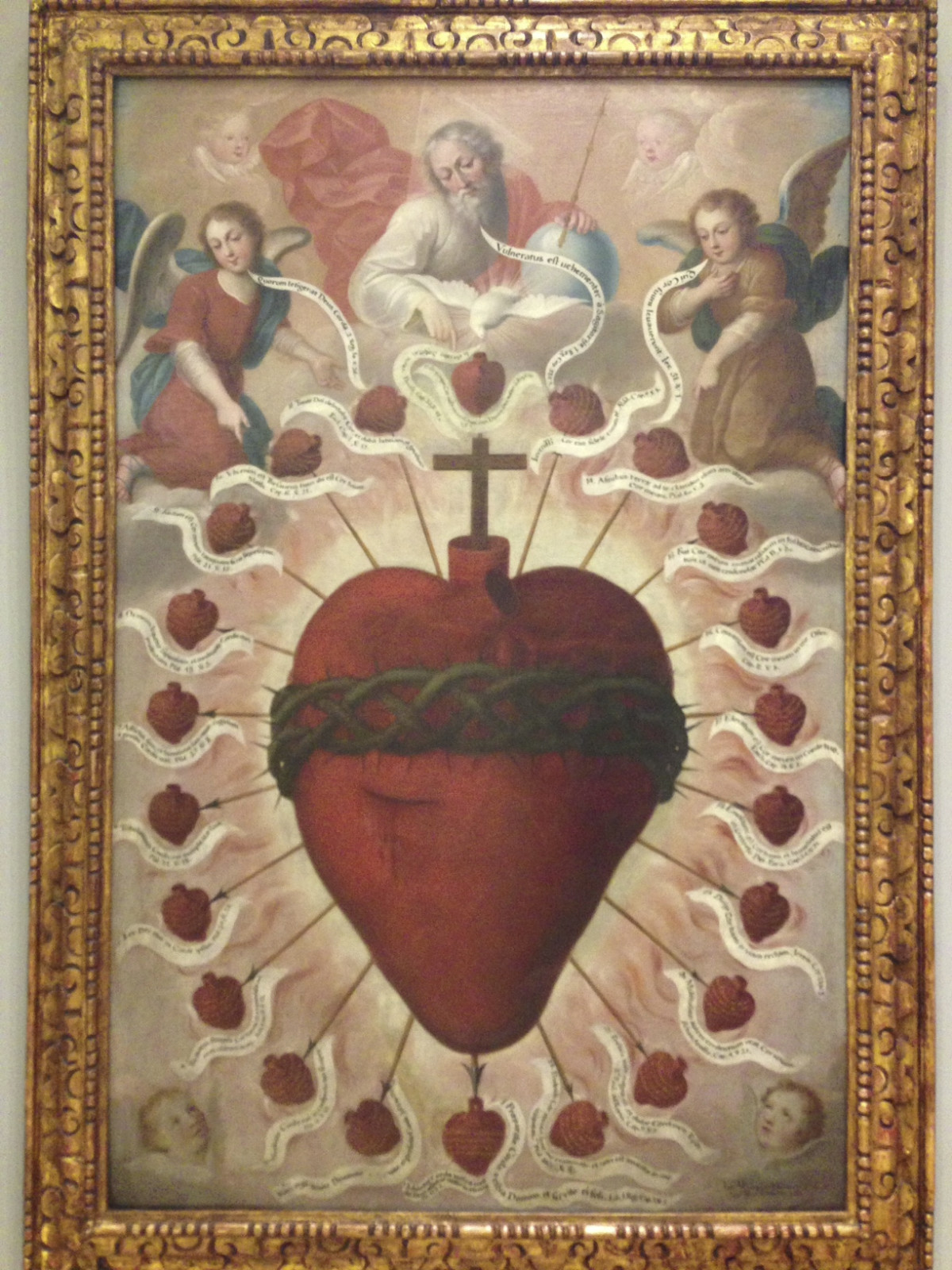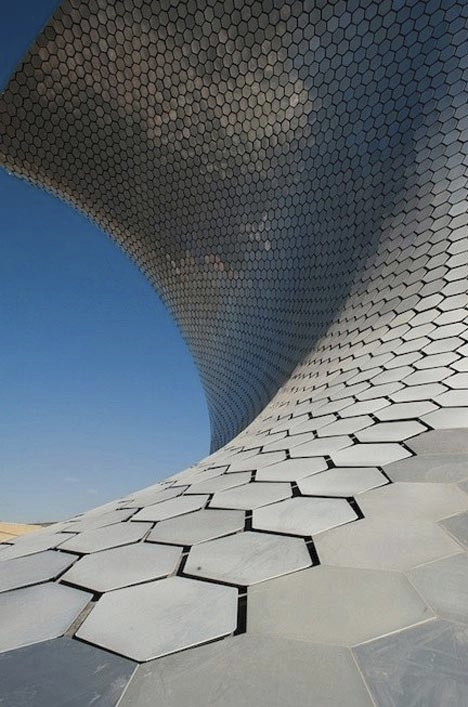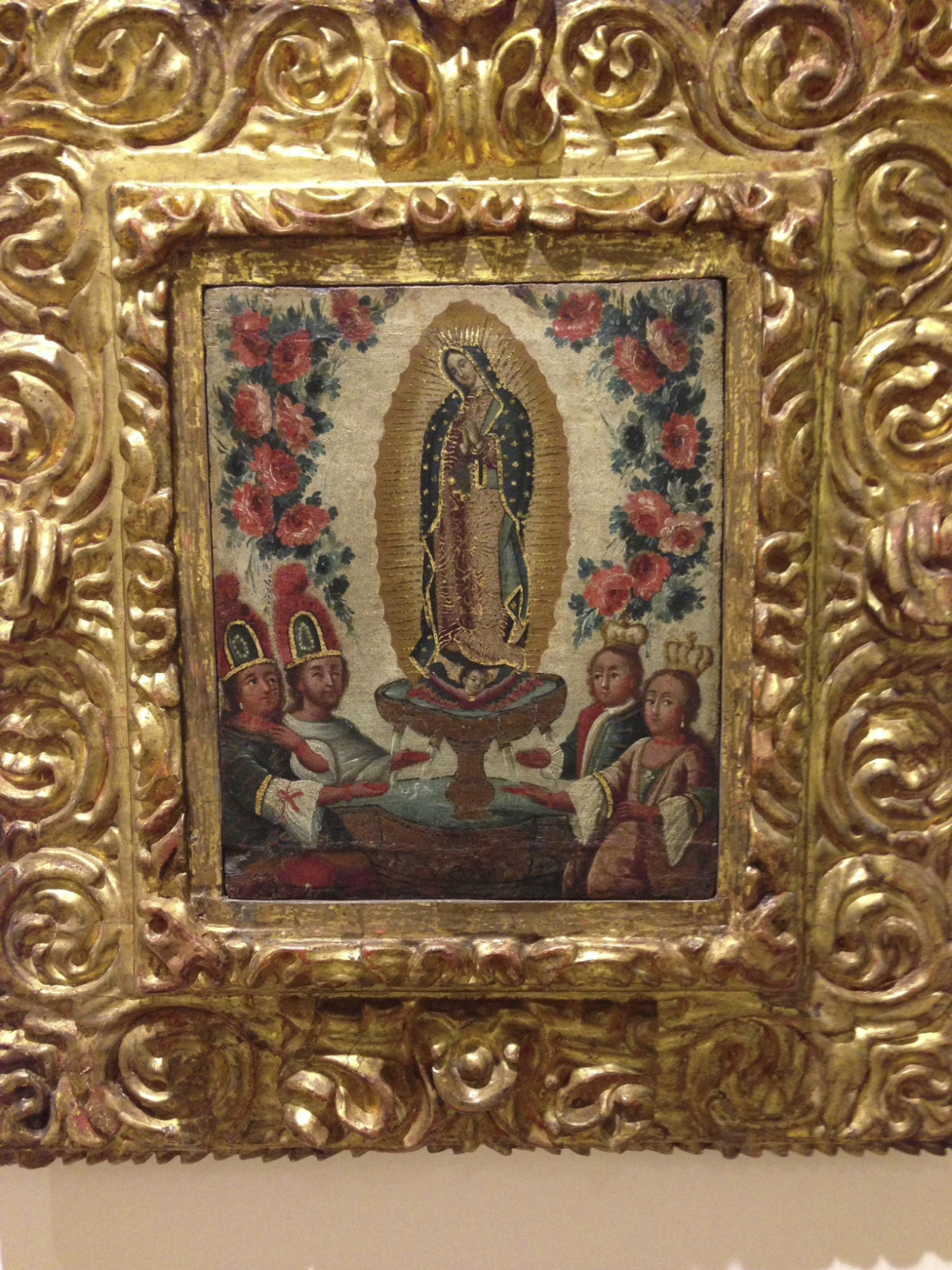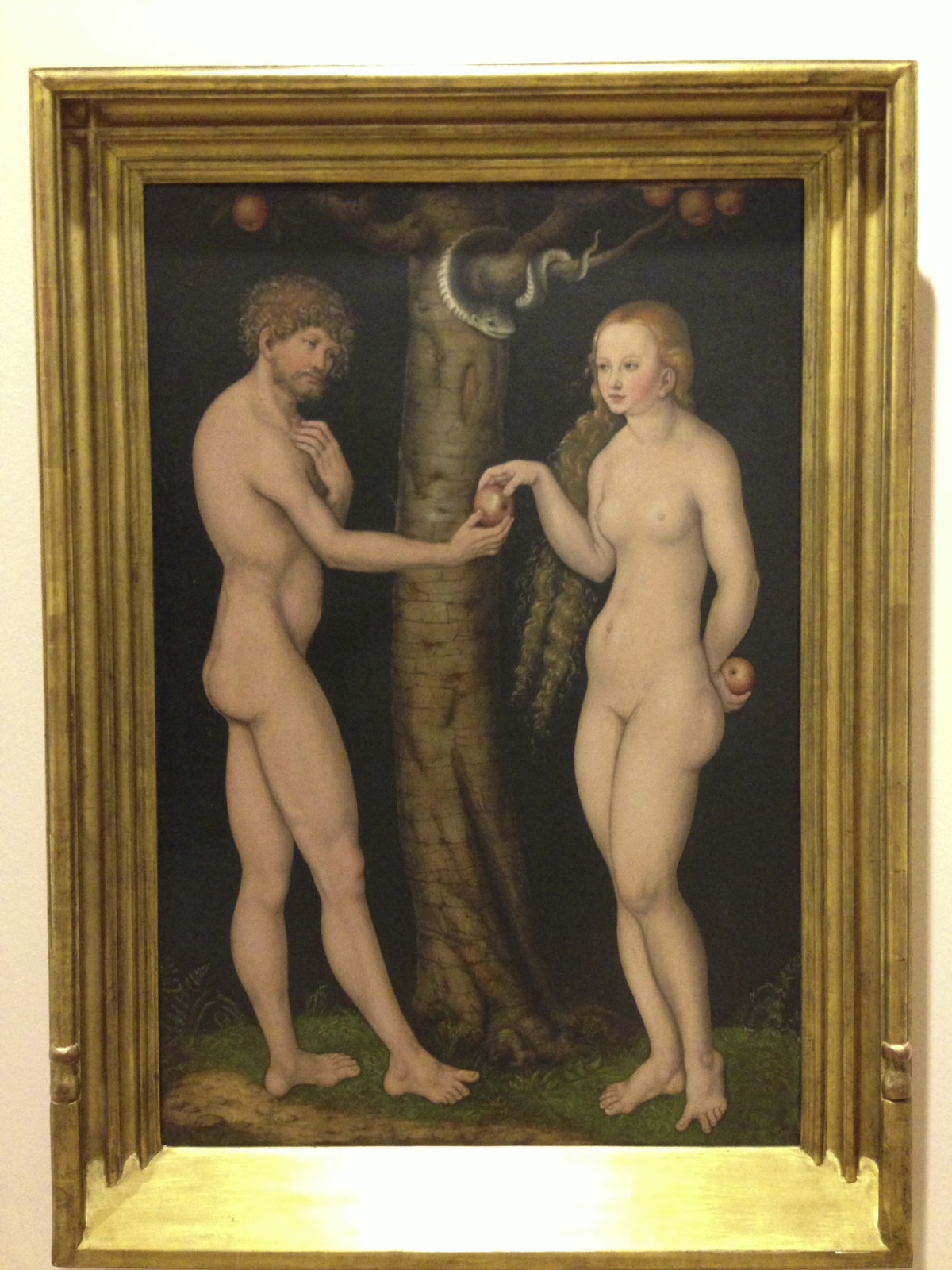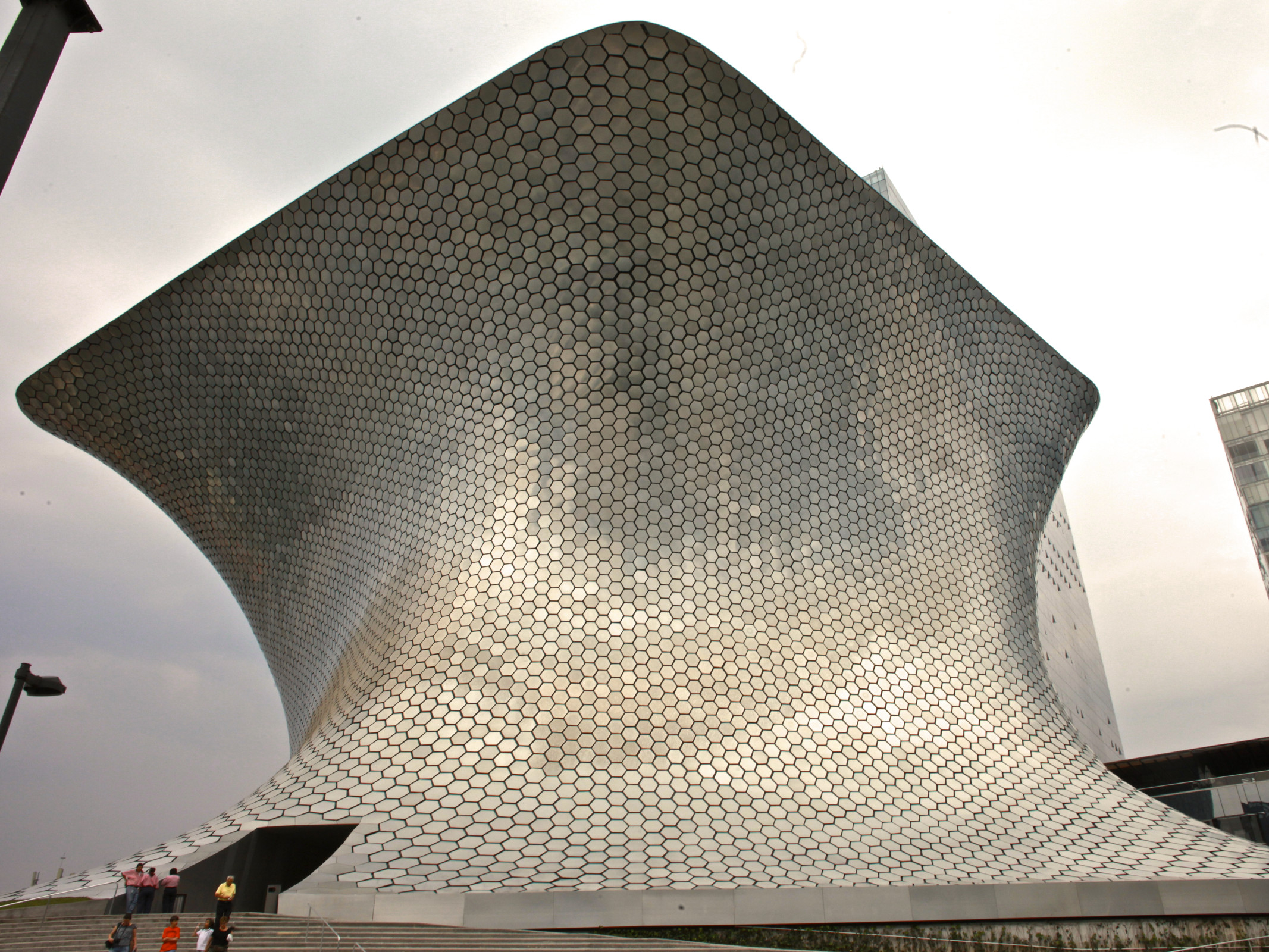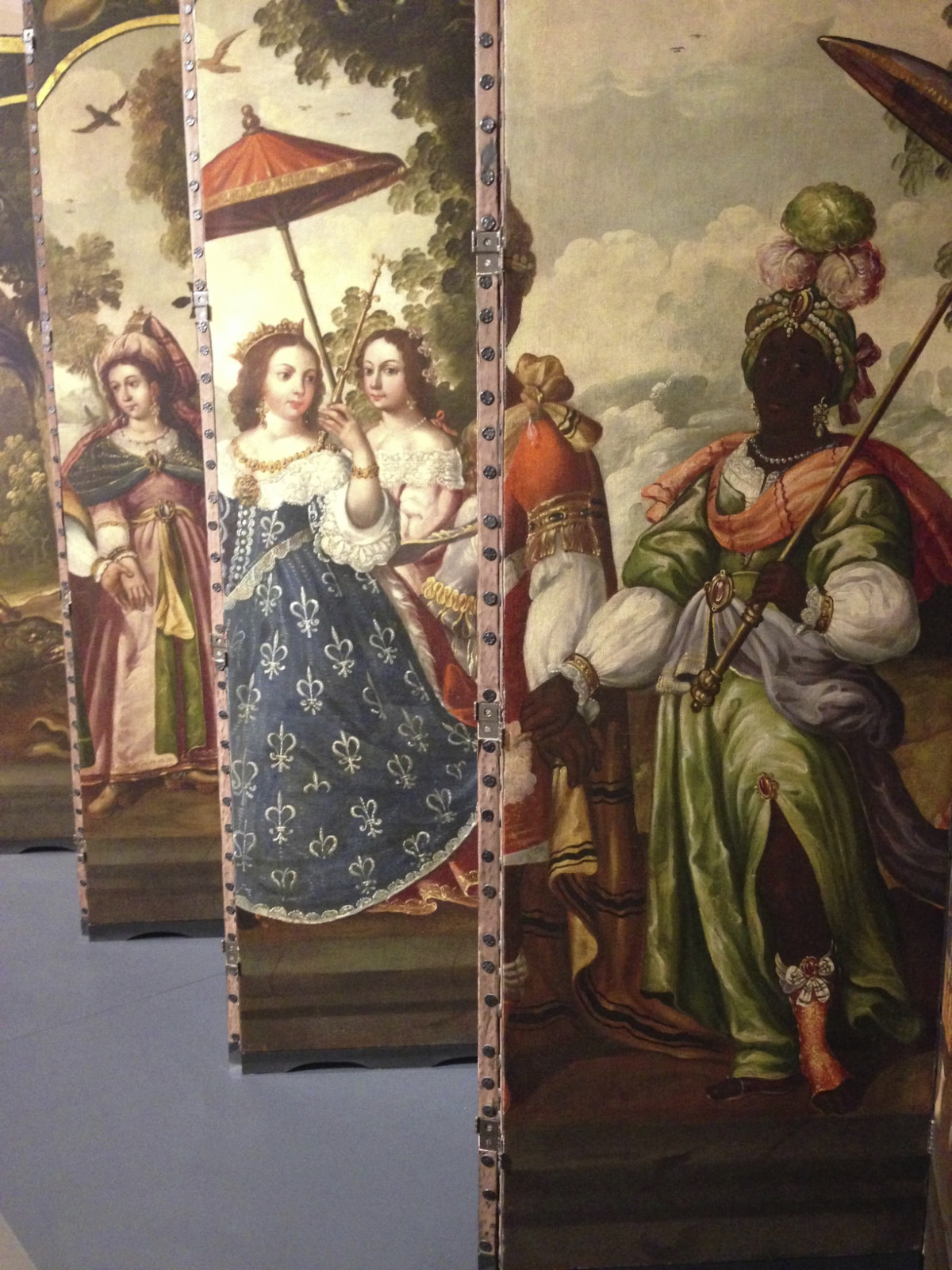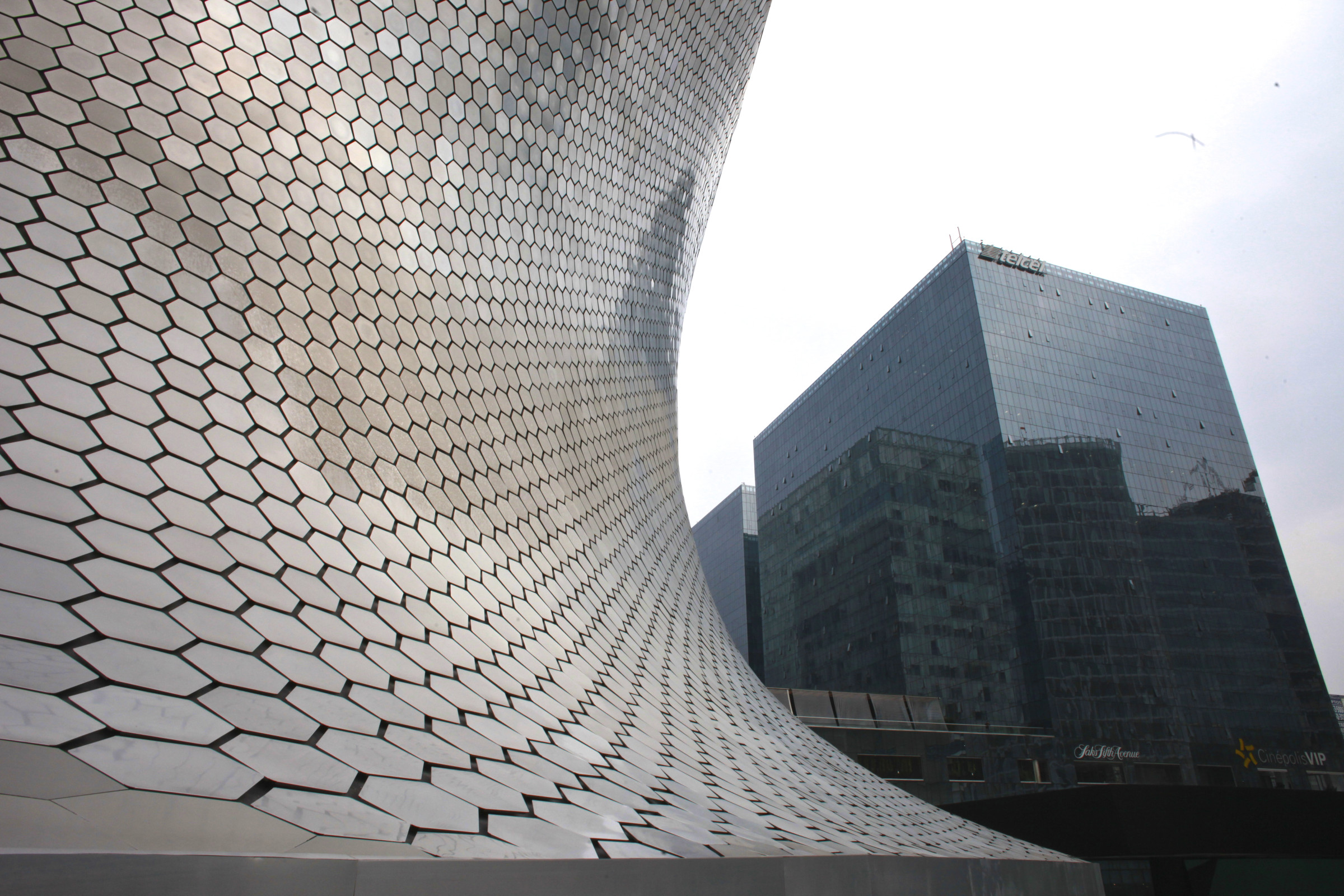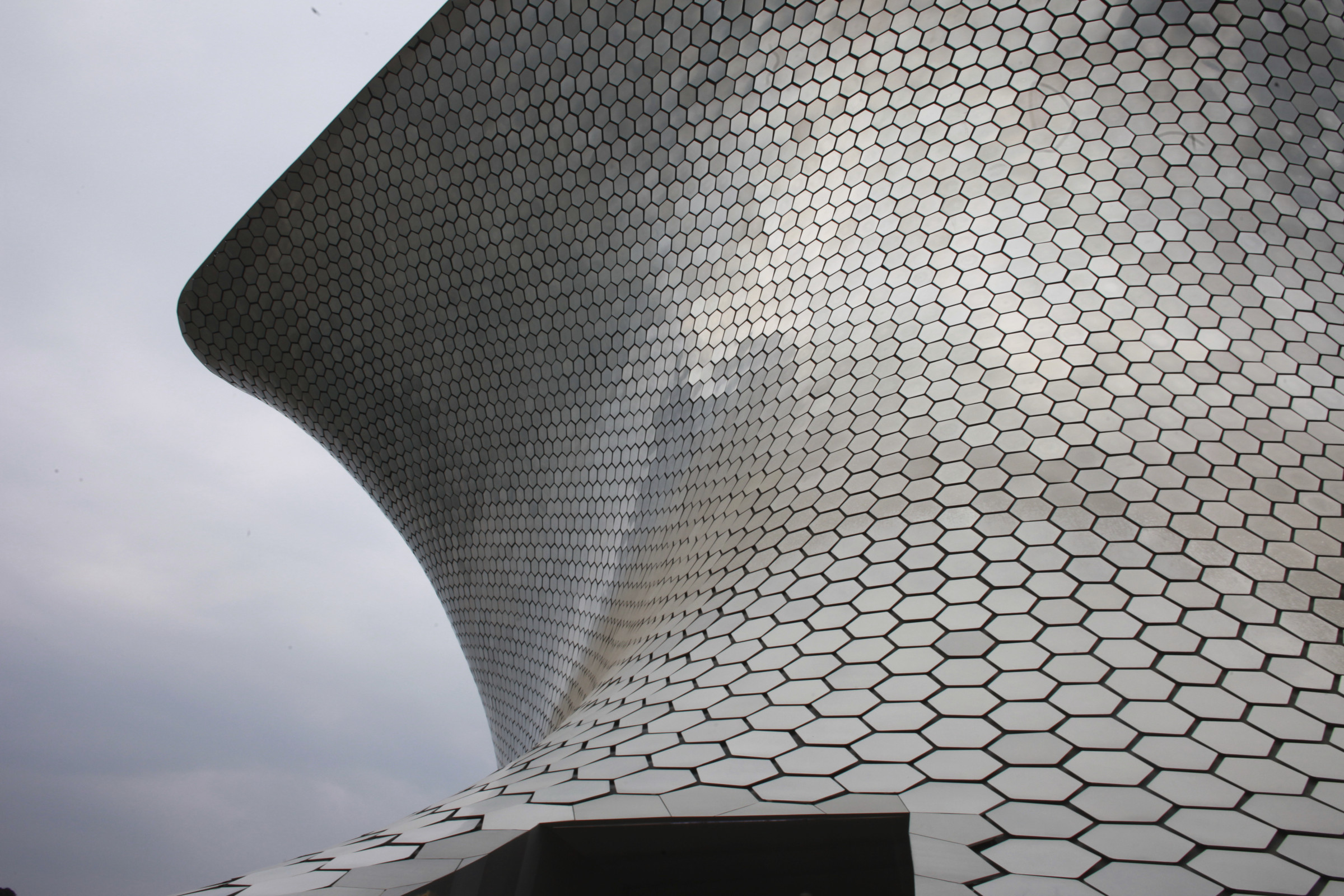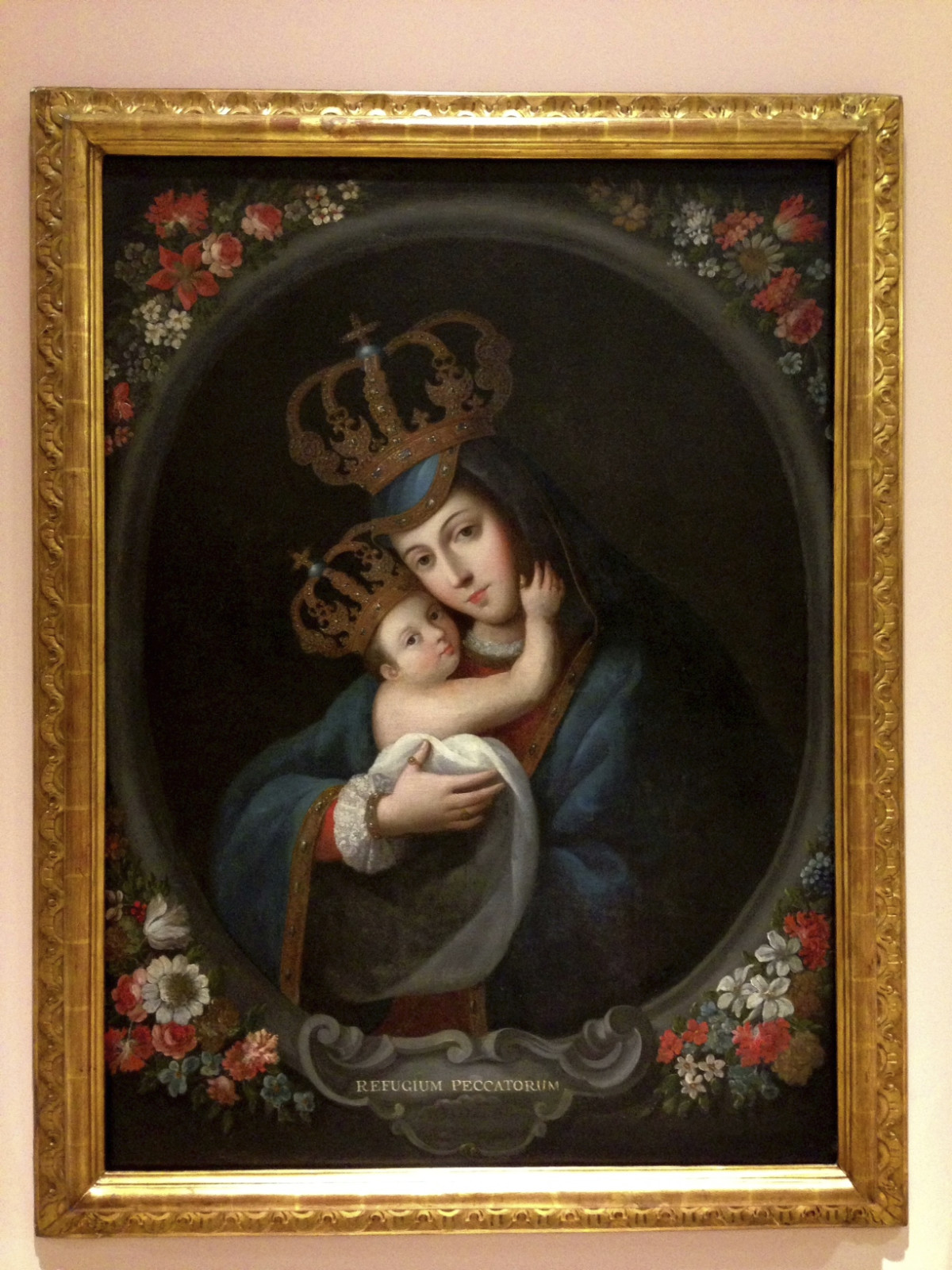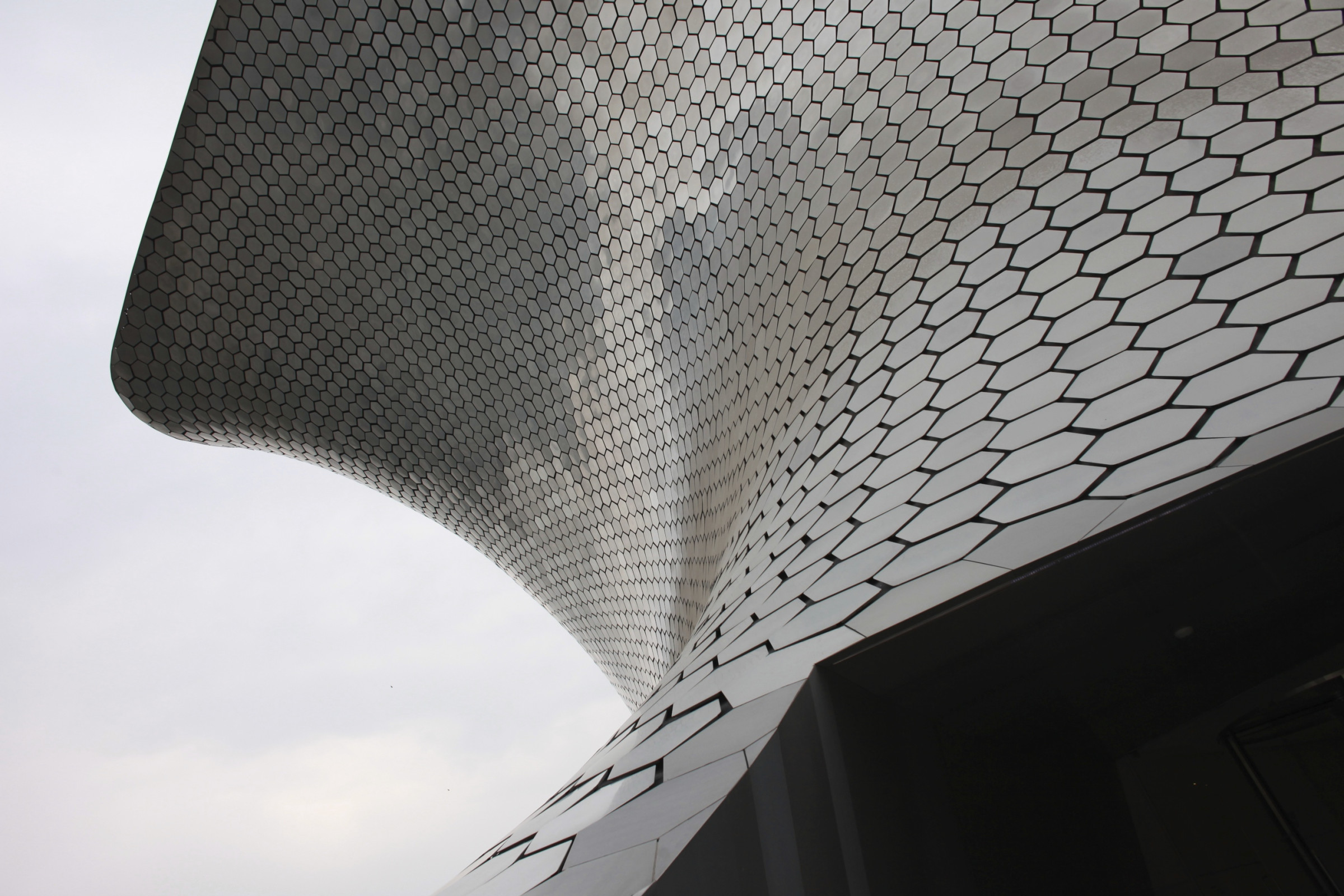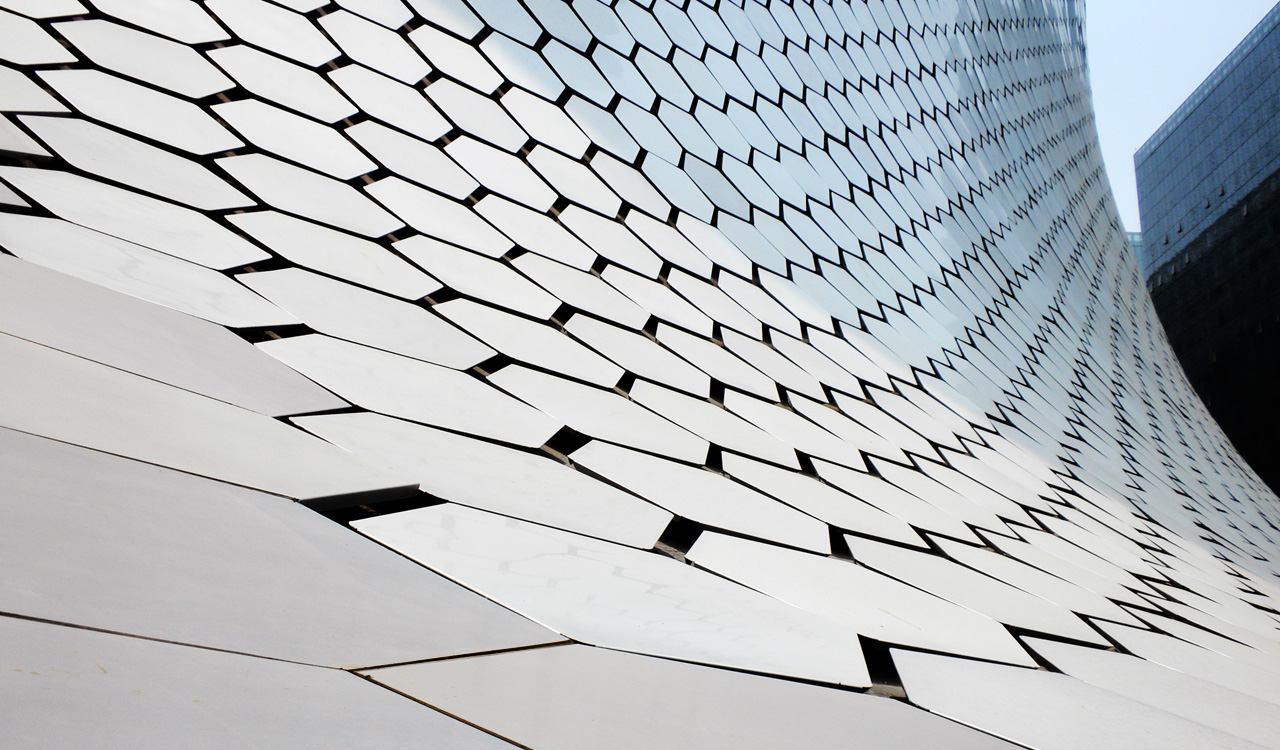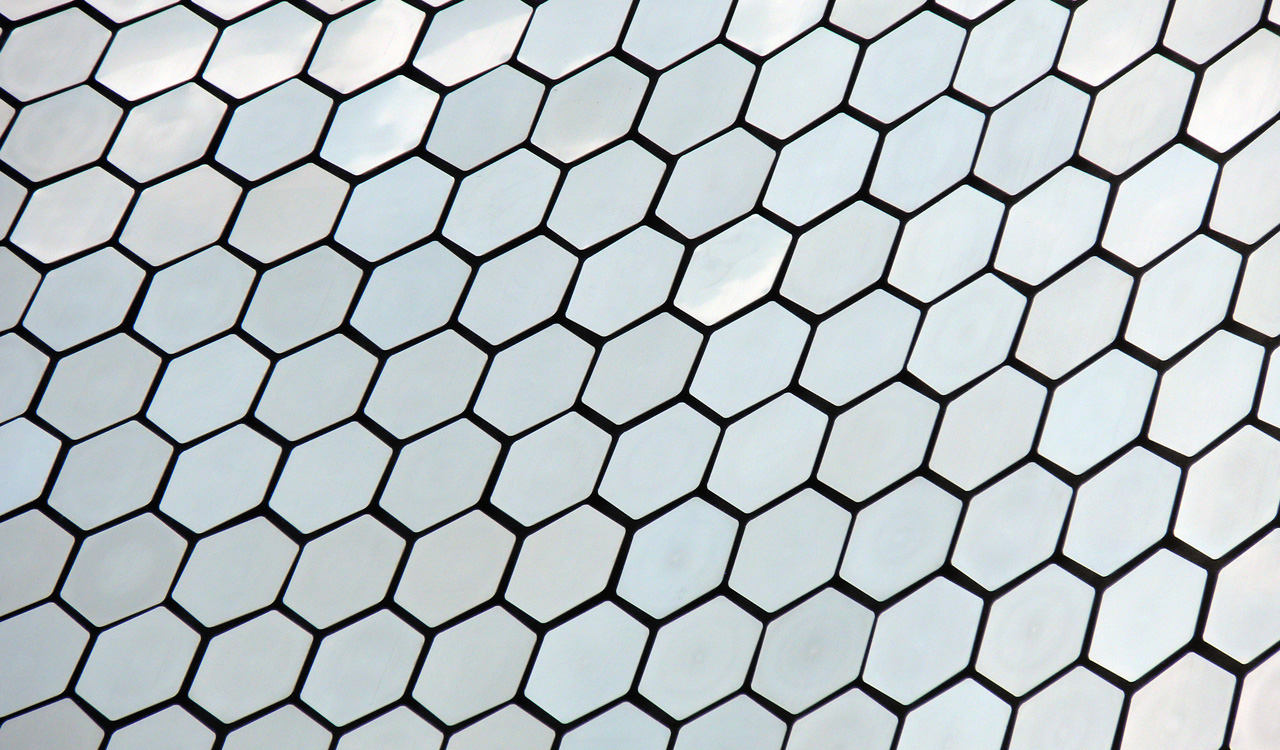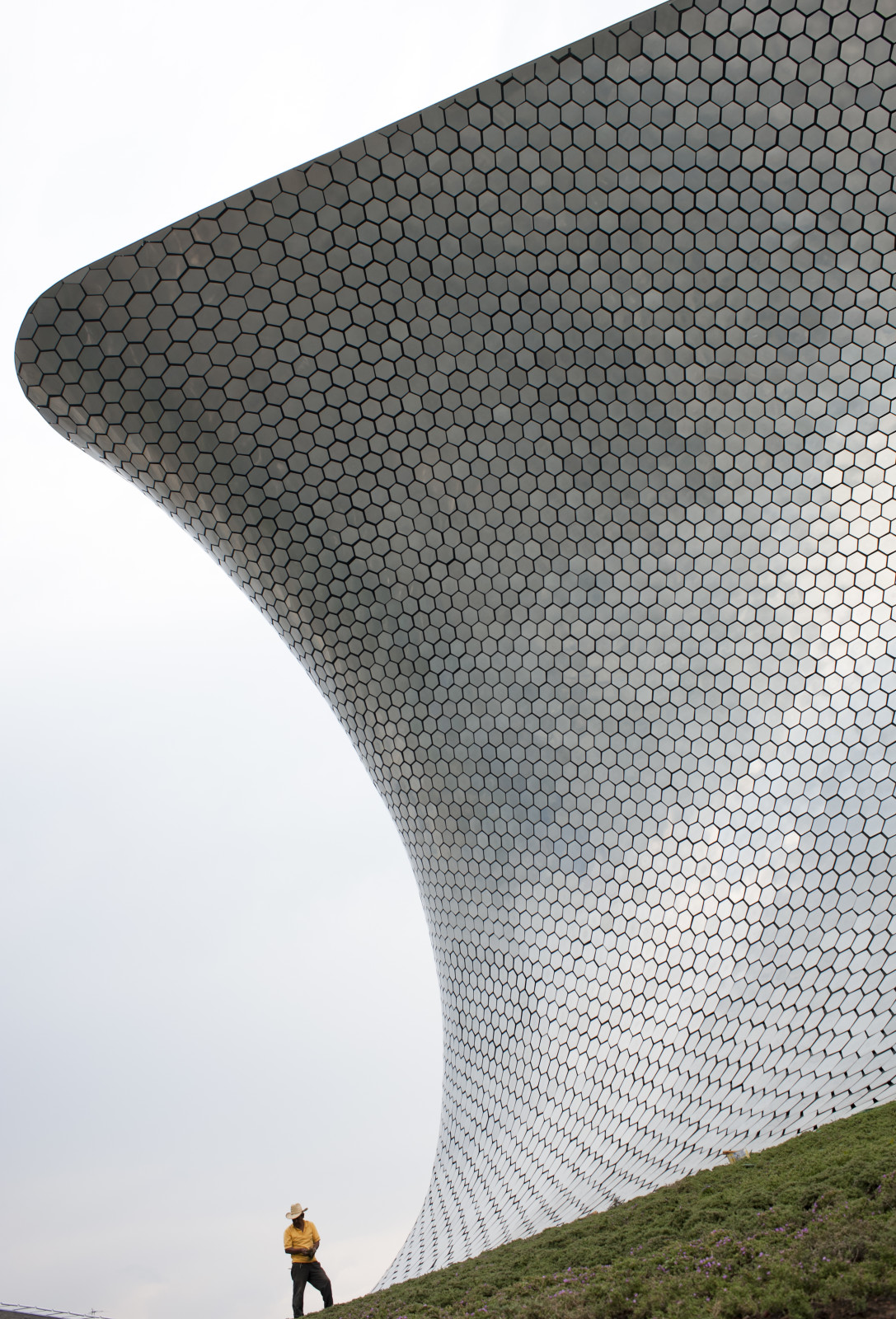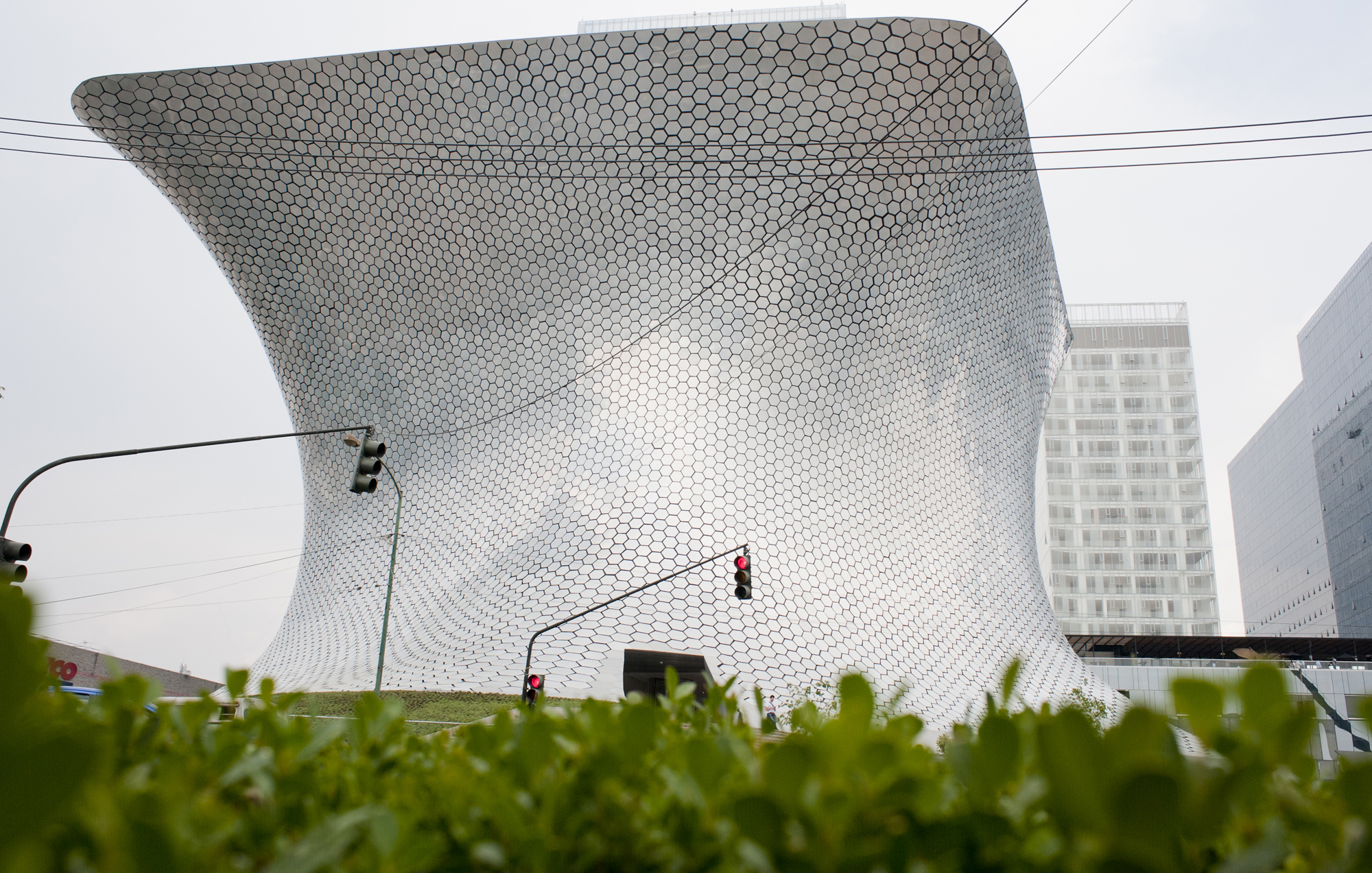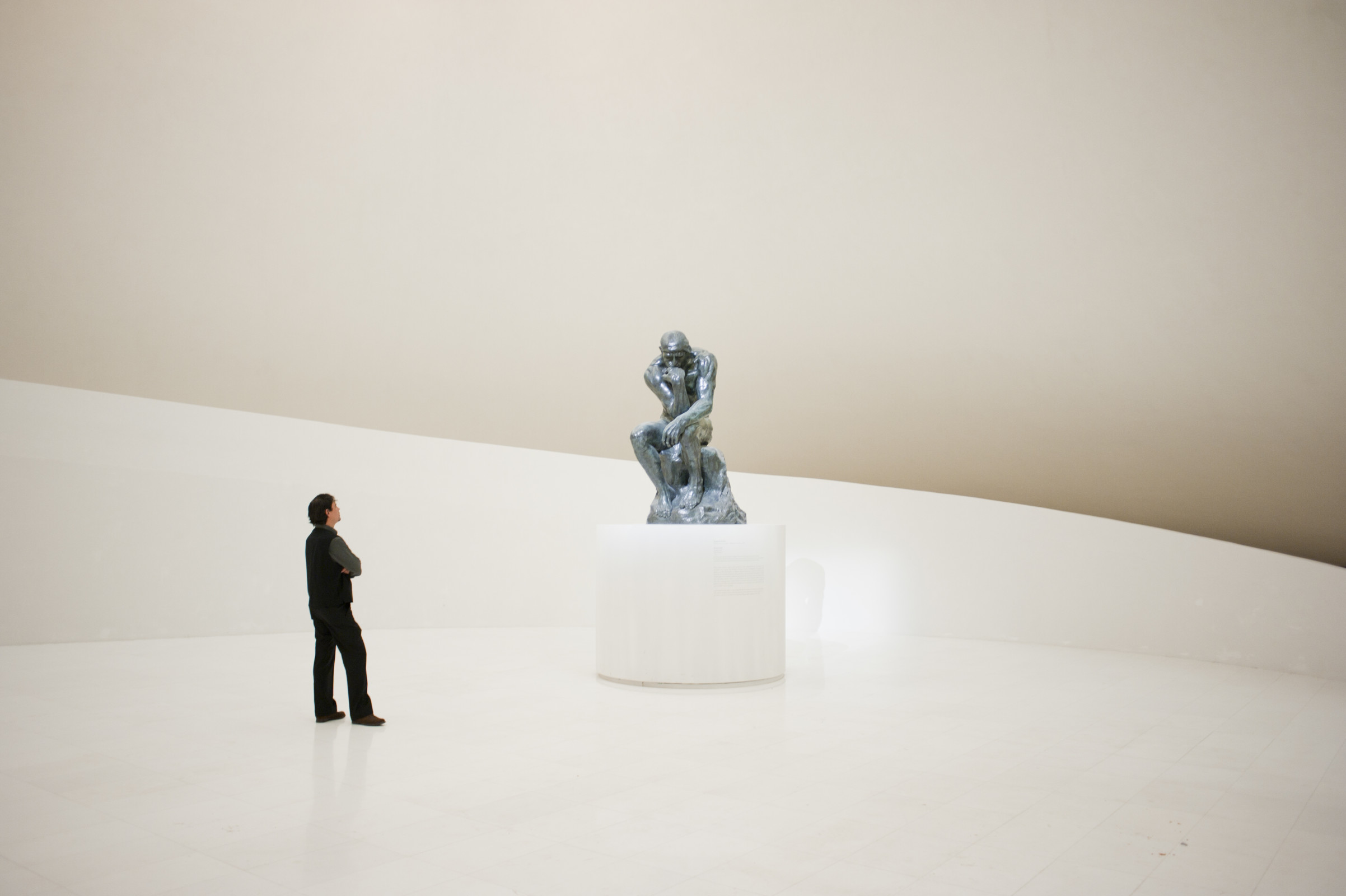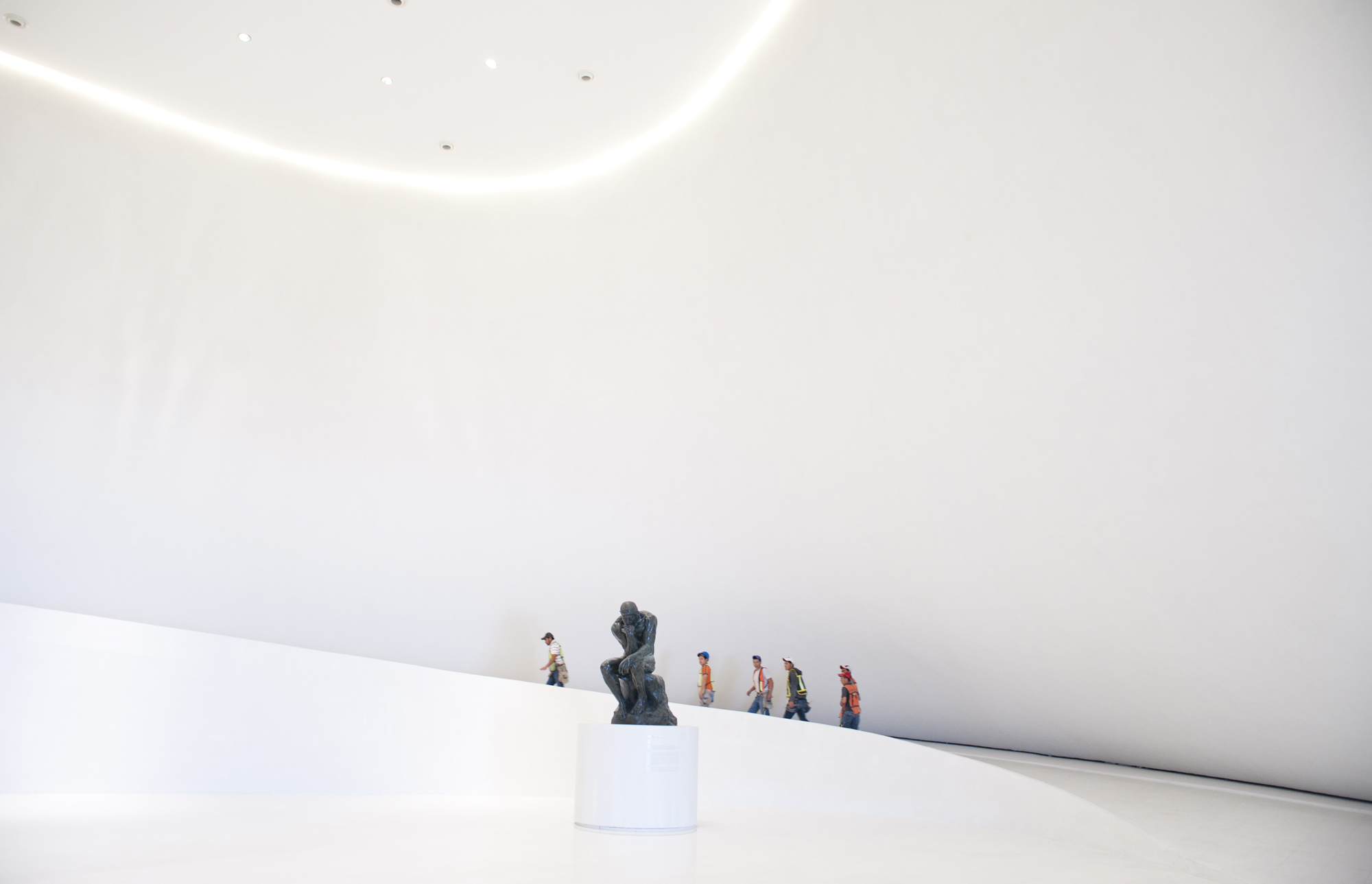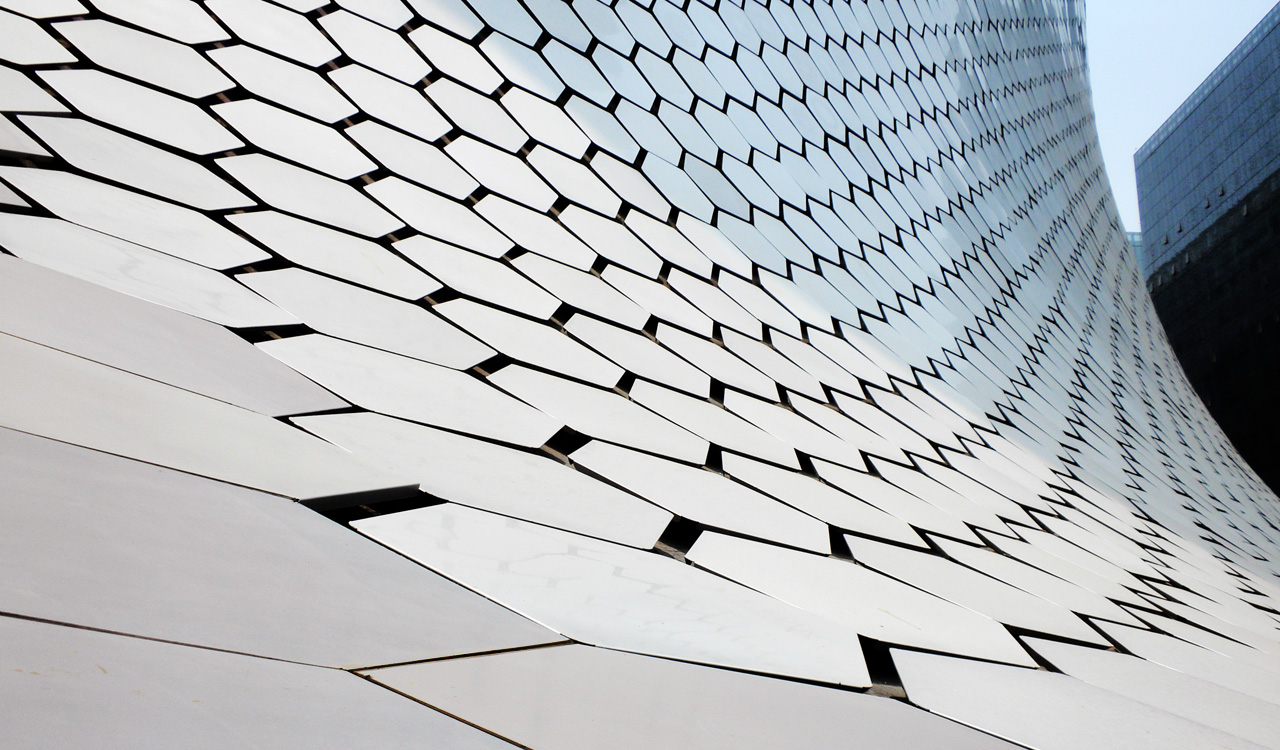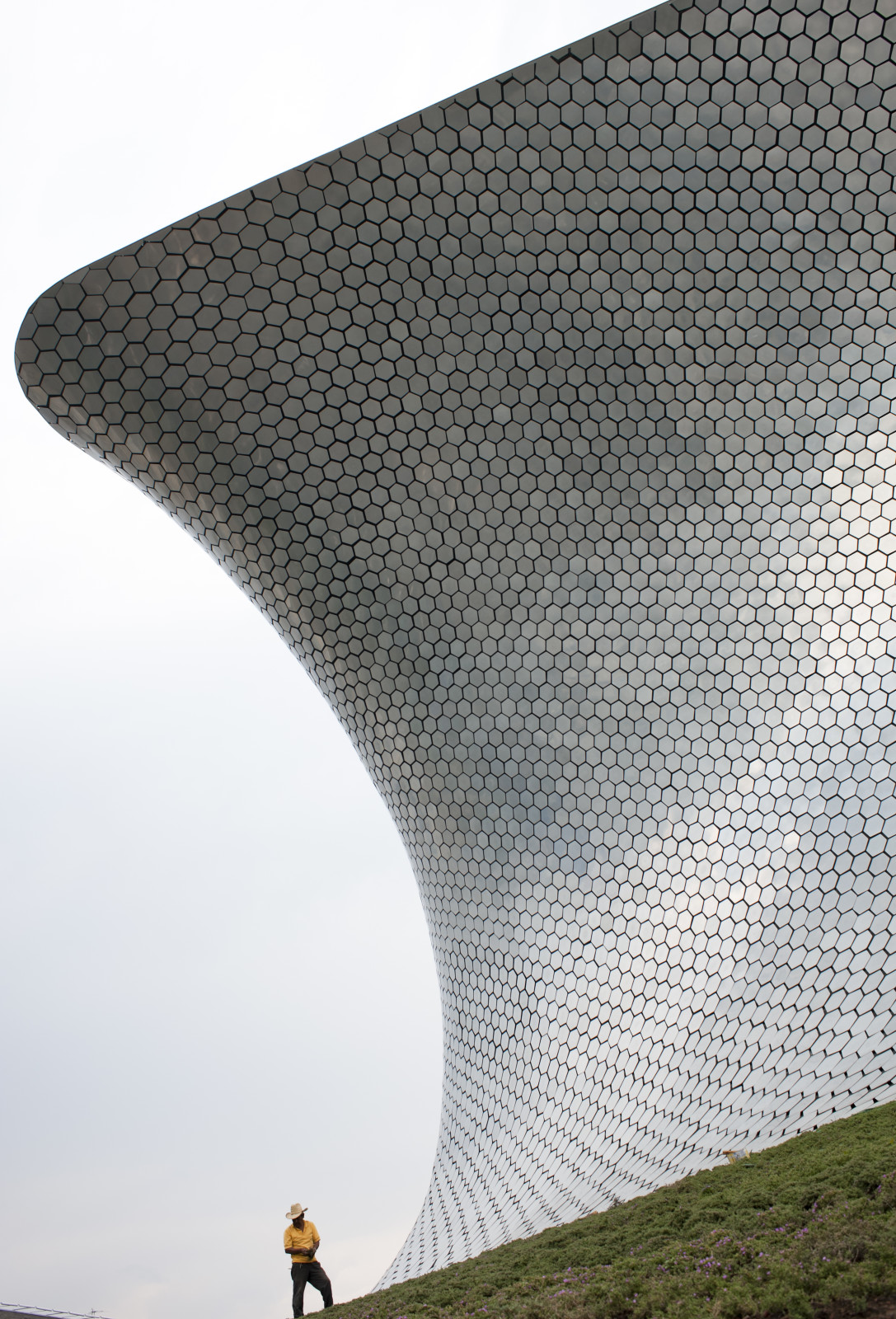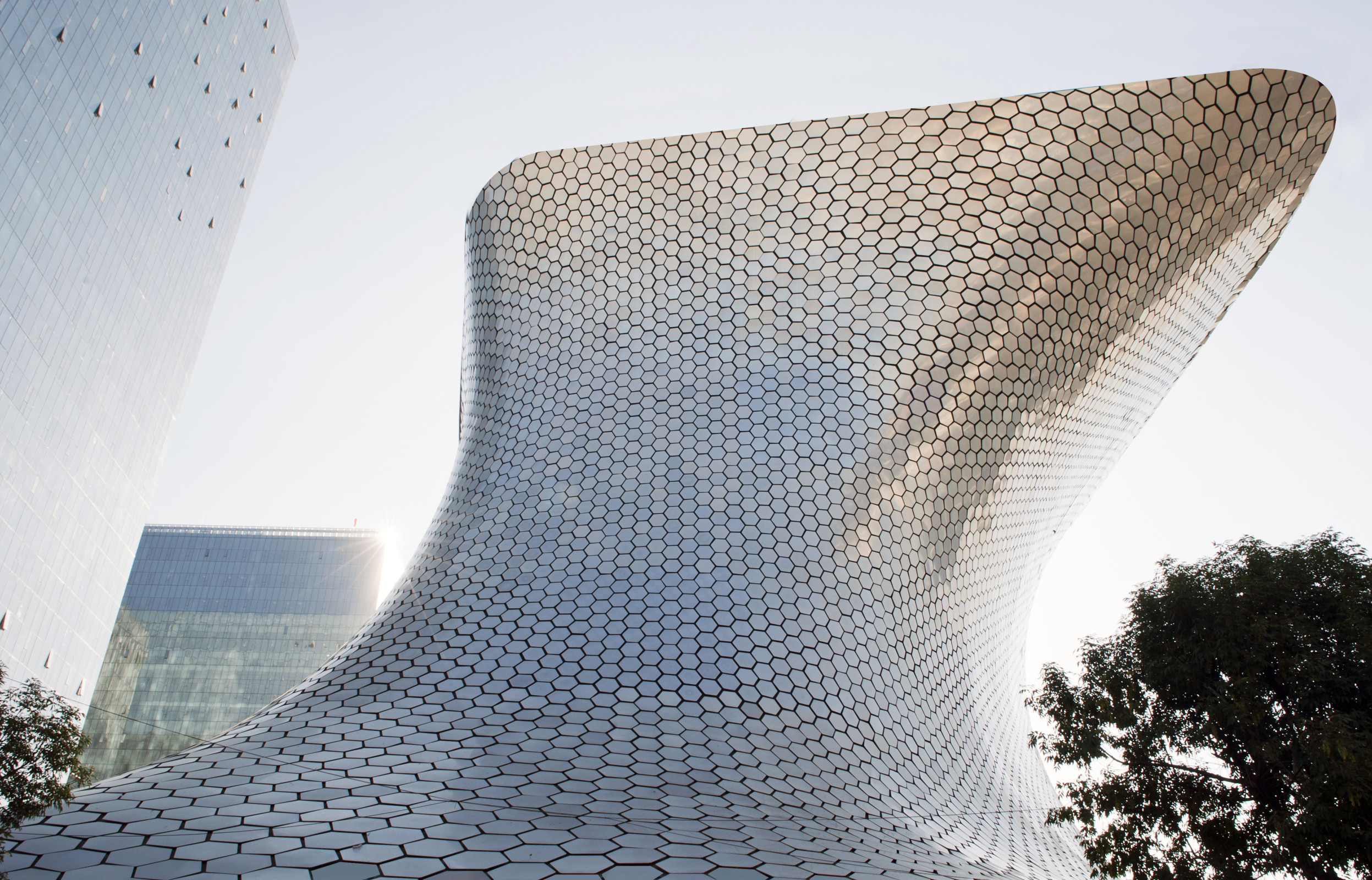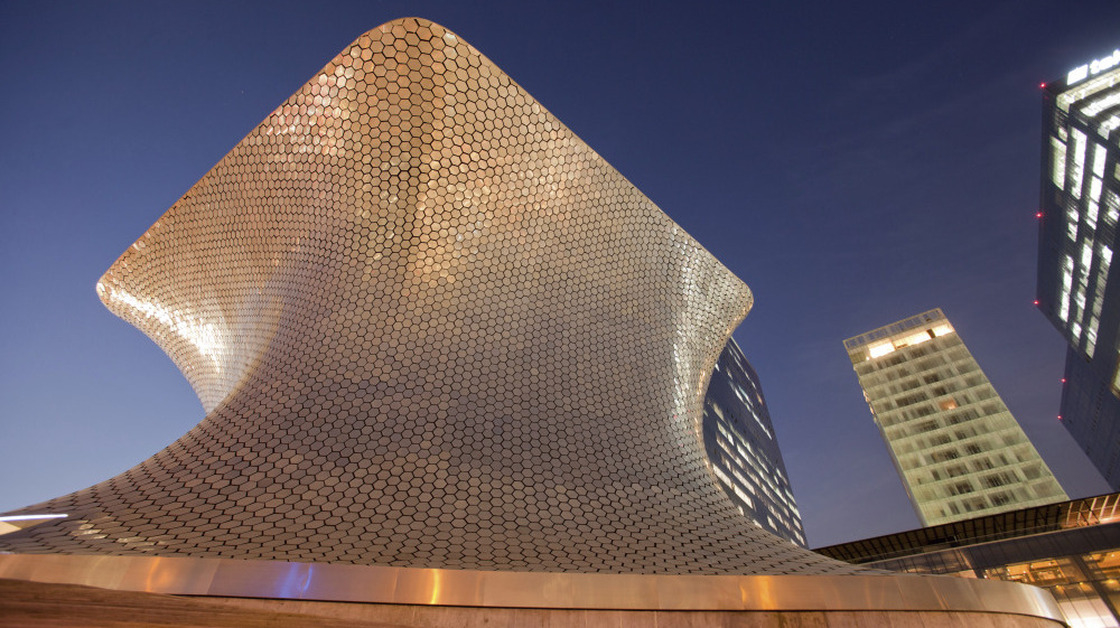Designed by FREE | Fernando Romero EnterprisE, Museo Soumaya opened to the public on March 29, 2011 after four years of development. The Museo Soumaya houses one of the most important art collections in Latin America with over 6,200 artworks and 60,000 square feet of exhibition space.
It is located in a former industrial zone dating from the 1940’s which today presents a very high commercial potential. The Museum plays a key role in the reconversion of the area: as a preeminent cultural program, it acts as an initiator in the transformation of the urban perception. Its avant-garde morphology and typology define a new paradigm in the history of Mexican and international architecture.
From the outside, the building is an organic and asymmetrical shape that is perceived differently by each visitor, while reflecting the diversity of the collection on the inside. Its heterogeneous collection is housed in a continuous exhibition space spread over six levels, representing approximately 60,000 ft². The building also includes an auditorium for 350 people, library, offices, a restaurant, a gift shop and a multi-purpose gathering lounge.
The shell of the building is constructed with 28 steel curved columns of different diameters, each with its own geometry and shape, offering the visitor a soft non-linear circulation all through the building. Located at each floor level, seven ring beams provide a system that braces the structure and guarantees its stability.
The top floor is the most generous space of the museum; its roof is suspended from an impressive cantilever that allows natural daylight to flow in freely. In contrast, the building’s envelope is nearly opaque, offering little and scarce openings to the outside. This gesture can be interpreted as an intention to create a protected shelter for the art collection. The façade is made of hexagonal aluminum modules that optimize the preservation and durability of the entire building.
The world’s richest man telecommunications mogul Carlos Slim , intention was to showcase his extensive European and Mexican art collection calling the museum a gift to his country.
The glimmering, modern building is already being hailed as a new landmark in Mexico’s capital, but it is also being criticized as the pet project of a man who knows more about business than art.
Slim’s new Soumaya Museum is a windowless, metallic, six-story structure shaped like a surrealist hourglass. Local critics have compared the building, which was designed by Slim’s son-in-law, to Frank Gehry’s Guggenheim in Bilbao, Spain.
It shimmers like the Guggenheim, but it’s crammed into one of Slim’s commercial real estate developments next to a shopping mall, an office tower for Slim’s cellphone company and blocks of new condominiums.
Inside, a bronze cast of Rodin’s The Thinker dominates the open, airy lobby. There’s also a colorful mural by Diego Rivera pointing toward the bathrooms.
“This is the last mural of Diego Rivera,” says Alfonso Miranda Marquez, the director of the Soumaya. The museum is named for Slim’s late wife, Soumaya, who died in 1999.
Slim’s collection of more than 65,000 pieces is dominated by European artists, including El Greco, Van Gogh, Matisse, Degas and Picasso.
“This is for the impressionists,” Miranda says. “It’s very difficult to see these artists in Latin America. It’s impossible to travel, to be so close to Manet or Renoir. This is also one of the highlights of our collection.”
There’s an entire section for religious art: A Mexican portrait of the Virgin of Guadalupe hangs next to a Spanish painting of the Virgin of Toledo which I found stunning and can be seen on joellestagram gallery.
Miranda says his goal is for the museum to become a cultural icon in Mexico City and present a different side of the capital.
“OK, we have problems of pollution, problems of violence. But you can see here there are people here, living and enjoying art,” he says. “We are not afraid under the bed. This is another idea for Mexico and for Latin America.”
Sources:
NPR : National Public Radio : News & Analysis, World, US, Music & Arts : NPR
